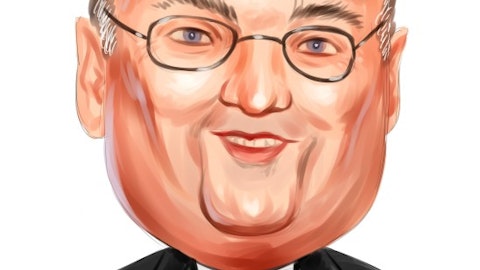One of the big concerns with the proposed capital rule for the government-sponsored enterprises (GSEs) is the fact that it requires Fannie Mae and Freddie Mac to hold more capital than originally expected. However, there’s much more than meets the eye when it comes to the new GSE capital rule.
GSE rule is manageable
In a recent note, Nomura Instinet analyst Matthew Howlett said even though the new GSE rule came in above his expectations, it still seems very manageable. The rule requires Fannie Mae and Freddie Mac to hold a combined $243 billion. The amount falls to or $234 billion if excluding the binding restraint of the leverage ratio that impacted Freddie’s level. Howlett had been expecting the amount to come in at $160 billion.
He said at first glance, the new GSE rule seems “overly punitive.” It calls for critical capital to be at 4%, compared to his expectation of 2.7%. Specifically, he mentioned the market share test and credit risk transfer, but he expects the rule to be relaxed when it is finalized.
Either way, he said the rule puts Fannie Mae and Freddie Mac on track to be the world’s strongest capitalized financial institutions. He believes that should create significant demand from investors when the companies hold their public offerings.
More than meets the eye in the GSE rule
Grant Stark of CapWealth advisors told ValueWalk in an email that many viewed the new GSE capital rule with doubt because of the headline capital requirement. However, he said the devil is in the details.
“FHFA’s $240 billion capital requirement sounds prohibitively high at first glance, but it is important to understand the framework’s separation of statutory capital and prescribed capital conservation buffer amounts. The critical component – core capital – is likely in the range of $135 billion, or 2.5%. Fannie and Freddie have the ability to restructure preferred stock, with a par value of approximately $33 billion, raise additional capital through retained earnings, and offer new issuances to investors with a market-rate return on equity.”
Howlett estimates that Fannie Mae and Freddie Mac may have to raise another $20 billion to $30 billion in capital, but that could be weighted more in preferred shares. He explained that preferred equity capital can be as high as 30% of Tier 1 capital. He expects the GSEs to raise capital in two rounds in 2021 and 2022.
He also estimates that both Fannie and Freddie could need another three to four quarters to meet their regulatory requirements, which would put them exiting conservatorship in mid-2024.
Fannie Mae, Freddie Mac to offer attractive ROE
The Federal Housing Finance Agency said when it released the GSE capital rule that it wants to increase not only the quantity of capital but also the quality of it. Thus, it made two significant adjustments to it compared to the previous GSE capital rule.
The first change is to include an adjustment on the mark-to-market loan-to-value when national home prices are more than 5% different from the long-term inflation-adjusted trend. The other big change was to reduce the effectiveness of credit risk transfer through capital requirement on retained senior tranches. This will disincentivize Fannie Mae and Freddie Mac from using risk transfer products in the future.
Stark noted that the FHFA retained Houlihan Lokey in February, and the firm probably reviewed the GSE capital rule to ensure that it would generate a return on equity that would be attractive to new market participants.
“Moderate adjustments to the guarantee fee are sustainable and final capital requirements will ensure safety and soundness while generating a ROE attractive to new capital,” he said.
Howlett noted that the new GSE capital rule moves Fannie Mae and Freddie Mac toward alignment with systemically important financial institutions alongside banks. This move should make the GSEs better understood by a wider audience of investors.
“The plan is a nod by the FHFA that the GSEs need to be in a position to attract and retain substantial equity capital going forward,” he said.
Video: Top 5 Stocks Among Hedge Funds
At Insider Monkey we leave no stone unturned when looking for the next great investment idea. For example, 2020’s unprecedented market conditions provide us with the highest number of trading opportunities in a decade. So we are checking out stocks recommended/scorned by legendary Bill Miller. We interview hedge fund managers and ask them about their best ideas. If you want to find out the best healthcare stock to buy right now, you can watch our latest hedge fund manager interview here. We read hedge fund investor letters and listen to stock pitches at hedge fund conferences. Our best call in 2020 was shorting the market when the S&P 500 was trading at 3150 after realizing the coronavirus pandemic’s significance before most investors. You can subscribe to our free enewsletter below to receive our stories in your inbox:
Disclosure: None





